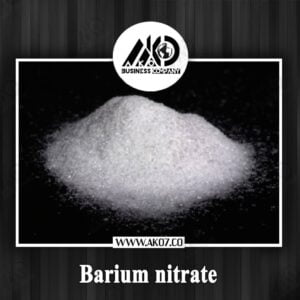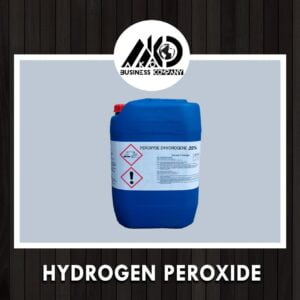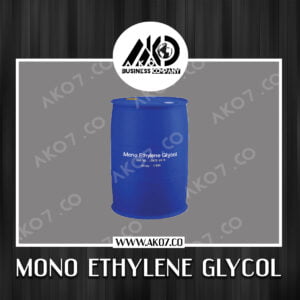Indian Kaolin
CHEMICALSIndian Kaolin:
Kaolinite is a clay mineral, with the chemical composition Al2Si2O5(OH)4. It is a layered silicate mineral, with one tetrahedral sheet of silica (SiO4) linked through oxygen atoms to one octahedral sheet of alumina (AlO6) octahedra.
Kaolinite is a soft, earthy, usually white, mineral (dioctahedral phyllosilicate clay), produced by the chemical weathering of aluminium silicate minerals like feldspar. It has a low shrink–swell capacity and a low cation-exchange capacity (1–15 meq/100 g).
Rocks that are rich in kaolinite, and halloysite, are known as kaolin or china clay. In many parts of the world kaolin is colored pink-orange-red by iron oxide, giving it a distinct rust hue. Lower concentrations yield white, yellow, or light orange colors.
Kaolin is an important raw material in many industries and applications. Commercial grades of kaolin are supplied and transported as powder, lumps, semi-dried noodle or slurry.
Description
Indian Kaolin:
Kaolinite is a clay mineral, with the chemical composition Al2Si2O5(OH)4. It is a layered silicate mineral, with one tetrahedral sheet of silica (SiO4) linked through oxygen atoms to one octahedral sheet of alumina (AlO6) octahedra.
Kaolinite is a soft, earthy, usually white, mineral (dioctahedral phyllosilicate clay), produced by the chemical weathering of aluminium silicate minerals like feldspar. It has a low shrink–swell capacity and a low cation-exchange capacity (1–15 meq/100 g).
Rocks that are rich in kaolinite, and halloysite, are known as kaolin or china clay. In many parts of the world kaolin is colored pink-orange-red by iron oxide, giving it a distinct rust hue. Lower concentrations yield white, yellow, or light orange colors.
Kaolin is an important raw material in many industries and applications. Commercial grades of kaolin are supplied and transported as powder, lumps, semi-dried noodle or slurry.
Structure:
Kaolinite structure, showing the interlayer hydrogen bonds:
Compared with other clay minerals, kaolinite is chemically and structurally simple. It is described as a 1:1 or TO clay mineral because its crystals consist of stacked TO layers. Each TO layer consists of a tetrahedral (T) sheet composed of silicon and oxygen ions bonded to an octahedral (O) sheet composed of oxygen, aluminium, and hydroxyl ions. The T sheet is so called because each silicon ion is surrounded by four oxygen ions forming a tetrahedron. The O sheet is so called because each aluminium ion is surrounded by six oxygen or hydroxyl ions arranged at the corners of an octahedron. The two sheets in each layer are strongly bonded together via shared oxygen ions, while layers are bonded via hydrogen bonding between oxygen on the outer face of the T sheet of one layer and hydroxyl on the outer face of the O sheet of the next layer.
A kaolinite layer has no net electrical charge and so there are no large cations (such as calcium, sodium, or potassium) between layers as with most other clay minerals. This accounts for kaolinite’s relatively low ion exchange capacity. The close hydrogen bonding between layers also hinders water molecules from infiltrating between layers, accounting for kaolinite’s nonswelling character.
When moistened, the tiny platelike crystals of kaolinite acquire a layer of water molecules that cause crystals to adhere to each other and give kaolin clay its cohesiveness. The bonds are weak enough to allow the plates to slip past each other when the clay is being molded, but strong enough to hold the plates in place and allow the molded clay to retain its shape. When the clay is dried, most of the water molecules are removed, and the plates hydrogen bond directly to each other, so that the dried clay is rigid but still fragile. If the clay is moistened again, it will once more become plastic.
Applications
Main
As of 2009, up to 70% of kaolin was used in the production of paper. Following reduced demand from the paper industry, resulting from both competing minerals and the effect of digital media, in 2016 the market share was reported to be: paper, 36%; ceramics, 31%; paint, 7% and other, 26%.[60][61] According to the USGS, in 2021 the global production of kaolin was estimated to be around 45 million tonnes.
Paper applications require high-brightness, low abrasion and delaminated kaolins. For paper coatings it is used to enhance the gloss, brilliance, smoothness and receptability to inks; it can account for 25% of mass of the paper. As a paper filler it is used as a pulp extender, and to increase opacity; it can account for 15% of mass.
In whiteware ceramic bodies, kaolin can constitute up to 50% of the raw materials. In unfired bodies it contributes to the green strength, plasticity and rheological properties, such as the casting rate. During firing it reacts with other body components to form the crystal and glass phases. With suitable firing schedules it is key to the formation of mullite. The most valued grades have low contents of chromophoric oxides such that the fired material has high whiteness. In glazes it is primarily used as a rheology control agent, but also contributes some green strength. In both glazes and frits it contributes some #SiO2 as a glass network former, and #Al2O3 as both a network former and modifier.
Other industrial
- As a raw material for the production of an insulation material called Kaowool (a form of mineral wool).
- An additive to some paints to extend the titanium dioxide (TiO2) white pigment and modify gloss levels.
- An additive to modify the properties of rubber upon vulcanization.
- An additive to adhesives to modify rheology.
- As adsorbents in water and wastewater treatment.
- In its altered metakaolin form, as a pozzolan; when added to a concrete mix, metakaolin accelerates the hydration of Portland cement and takes part in the pozzolanic reaction with the portlandite formed in the hydration of the main cement minerals (e.g. alite).
- Metakaolin is also a base component for geopolymer compounds.
Medical
- To soothe an upset stomach, similar to the way parrots (and later, humans) in South America originally used it
- Kaolin-based preparations are used for treatment of diarrhea.
- An ingredient in ‘pre-work’ skin protection and barrier creams.
- To induce and accelerate blood clotting. In April 2008 the US Naval Medical Research Institute announced the successful use of a kaolinite-derived aluminosilicate infusion in traditional gauze. which is still the hemostat of choice for all branches of the US military.
- As a mild abrasive in toothpaste.
Cosmetics
- As a filler in cosmetics.
- For facial masks or soap.
- for spa body treatments, such as body wraps, cocoons, or spot treatments.
Archaeology
- As an indicator in radiological dating since kaolinite can contain very small traces of uranium and thorium.
Geotechnical engineering
- Research results show that the utilization of kaolinite in geotechnical engineering can be alternatively replaced by safer illite, especially if its presence is less than 10.8% of the total rock mass.
Small-scale uses
- As a light-diffusing material in white incandescent light bulbs.
- In organic farming as a spray applied to crops to deter insect damage, and in the case of apples, to prevent sun scald.
- As whitewash in traditional stone masonry homes in Nepal.
- As a filler in Edison Diamond Discs.
Safety
Kaolin is generally recognized as safe, but may cause mild irritation of the skin or mucous membranes. Kaolin products may also contain traces of crystalline silica, a known carcinogen if inhaled.
In the US, the Occupational Safety and Health Administration (OSHA) has set the legal limit (permissible exposure limit) for kaolin exposure in the workplace as 15 mg/m3 total exposure and 5 mg/m3 respiratory exposure over an 8-hour workday. The National Institute for Occupational Safety and Health (NIOSH) has set a recommended exposure limit (REL) of 10 mg/m3 total exposure TWA 5 mg/m3 respiratory exposure over an 8-hour workday.
Ako as your Indian Kaolin supplier:
As a supplier, we at Ako believe in innovative solutions and continuous improvement in the supply, storage and timely delivery of raw materials to chemical and industrial companies to accelerate our contribution to the progress of meeting the needs of the modern world. We invite you to visit our website to learn about our other products.






There are no reviews yet.